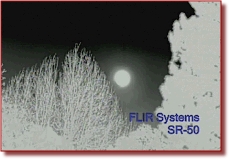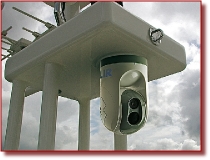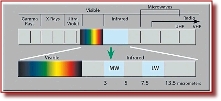 |
||
 |
||
![]()
![]()
![]()
![]()
![]()
![]()
![]()
Please Note - Doktor Jon is currently upgrading his site, so you may see some layout changes on various pages, whilst the work is in progress.
Hopefully, the complete re-design and improvements, should be completed by early 2010.
IMPORTANT: No material may be reproduced, copied or redistributed from this site, without the express written consent of doktorjon.co.uk
All the detailed information on this site is provided in good faith; and as such, Doktor Jon does not accept responsibility for any consequential loss, injury or disadvantage resulting from any individual or organisation acting on the details contained herein.
© doktorjon.co.uk 2004 - 2010

![]()
![]()

Are thermal cameras damaged by solar radiation?
Thermal imaging cameras can create high-contrast images even in the darkest of nights. This makes them excellent tools for a wide variety of applications such as security and surveillance, maritime, automotive and many others.
The purchase of a thermal imaging camera is a long term investment. Therefore it is important that you choose a reliable solution that will serve you for several years. Since most thermal imaging cameras are used in an outdoor environment, the first thing they need to resist are elements like water, wind and the sun. While it might be expected that rain and wind can damage a poorly designed or poorly assembled camera, the sun is also capable of damaging the sensitive thermal detector in certain thermal imaging cameras not designed to the standards that FLIR Systems maintains.
Thermal imaging cameras and the sun
Although no one purchases a thermal imaging camera for looking at the sun, situations can occur where this happens. Just imagine a thermal imaging camera installed on a Pan/ Tilt. When panning or tilting the camera, the operator can be distracted and turn the camera in a direction so that it points directly at the sun. The chances of this happening are higher if the sun is just above the horizon.
What happens more often, especially with fixed installed thermal imaging cameras, is that the sun is moving through the field of view of the thermal imaging camera which is looking at the horizon. Although thermal imaging cameras are mostly used during the night, many users rely on thermal imaging cameras during daytime as well. After all, thermal contrast is extremely difficult to mask, so people hiding in shadows or bushes will immediately be seen in a thermal image. Thermal imaging cameras are also not blinded by glare from the sun. But even if the camera is not switched on during daylight, the lens might be looking directly at the sun. For some thermal camera systems this can "fry" the detector.
No permanent damage with FLIR Systems Vanadium Oxide detectors
Unlike many other thermal infrared detectors, FLIR’s uncooled Vanadium Oxide microbolometer detector technology is immune to permanent damage when directly viewing the sun in normal video applications (i.e. the sun moves through the field of view of a fixed camera viewing the horizon).
However, because of the extremely high amount of thermal energy radiated by the sun, some temporary effects can be observed when the sun is in the field of view of the thermal imaging camera.
Protection mechanisms
FLIR’s thermal imaging cameras incorporate several protection mechanisms that make them immune to permanent solar damage while also minimizing any temporary effects.
First, the FLIR Vanadium Oxide (VOx) uncooled arrays are housed right behind a shortpass filter that blocks wavelengths shorter than 7 micrometers. This helps to mitigate the effect from solar radiation because as you increase the wavelength you are looking at, the energy radiated from the sun (temperature approximately 6,000K) decreases.
FLIR Systems uncooled VOx microbolometer detectors operate in the longwave infrared spectrum from 7.5-13.5 micrometers. The sun radiates the most energy at about 500 nanometers (the color green in the visible light spectrum), but there is still plenty of energy once the longer wavelength infrared spectrum is reached. Hence, cutting off the lower wavelengths decreases the energy allowed to the detector. There is also an anti-reflective coating on the detector surface that limits the energy absorbed from wavelengths outside the 7.5-13.5 micrometer range.
Another technique used to lessen the effects from the sun is found in the electronics of the detector. The bolometer contains an array of capacitors that change resistance when they absorb thermal energy. If a capacitor is ever overloaded with too much energy, it will eventually break down. Through electronic processes inside, the energy from normal sun exposure is dispersed and does not permanently damage the capacitors, which could result in bad pixels in the imaging array.
Temporary effects
While FLIR has taken steps to lessen the effects of the sun on its uncooled cameras, visible, temporary effects may be observed when a camera images the sun. A ’ghost’ image of the sun is the most pronounced effect seen after prolonged exposure at the sun.
The pixels that view the sun absorb higher levels of energy such that there is still a ghost image after the sun has moved. This is normal, temporary behavior. The length of time the ghost remains is dependent on the focal length of the lens, the length of exposure, and the number of Flat Field Calibrations (FFCs) that occur after exposure.
The FFC utilizes a shutter to recalibrate and re-zero the pixels approximately every 10 minutes. For a stationary camera where the sun moves across the camera’s image, the duration of the observable ghost image is generally only a few minutes, with decreasing in intensity over time and FFCs.
FLIR Systems thermal imaging cameras: immune for solar radiation
In closing, FLIR Systems has designed its uncooled VOx microbolometer technology for solar immunity. FLIR’s cameras will not be damaged by direct imaging of the sun, for example, when the sun moves through the field of view of a fixed camera pointed at the horizon. Temporary image artifacts or ghosts may be evident, but they will disappear during normal operation without operator intervention.
Although this may seem obvious, it is unfortunately not the case for all thermal imaging technology. Different manufacturers offer different models with different types of uncooled microbolometer detectors. Vanadium Oxide is just one material that is used for manufacturing these detectors. Other materials are Amorphous Silicon (α-Si) and Barium Strontium Titanate (BST). Manufacturers using α-Si or BST technology are sometimes even specifying in their own user manuals that the cameras cannot be exposed to direct sunlight. Otherwise the camera will be permanently damaged and warranty will be void.
When investing in a thermal imaging camera, for whatever application, you need to make sure that it will stay in operation for several years, without maintenance. Looking at the sun with the camera should not ruin it nor reduce its lifetime. Therefore uncooled Vanadium Oxide microbolometer detectors are the correct choice.
Since thermal contrast is extremely difficult to mask many thermal imaging cameras are being used during daylight as well. They can help to detect people hiding in shadows or trying to camouflage themselves. But even if the camera is not switched on during daylight, the lens might be looking directlyat the sun. For some thermal camera systems this can "fry" the detector.
Photo (above) reproduced by kind permission of FLIR Systems - view from an SR-50 thermal imaging camera looking directly at the sun
The sun radiates the most energy at about 500 nanometers (the color green in the visible light spectrum)
For further information visit:- www.flir.com
About FLIR Systems
FLIR Systems is the world leader in the design and manufacturing of thermal imaging cameras for a wide variety of applications. It has over 50 years of experience and thousands of thermal imaging cameras currently in use worldwide for security and surveillance, maritime, automotive and other night-vision applications. FLIR Systems has four manufacturing plants located in the USA: Portland, Boston, Santa Barbara and Bozeman, one in Stockholm, Sweden and one in Paris, France. It operates offices in the Australia, Belgium, Brazil, China, France, Germany, Italy, Japan, Spain, Sweden, United Arab Emirates, USA and the United Kingdom. The company has over 1,700 dedicated infrared specialists, and serves international markets through an international distributor network providing local sales and support functions. If you would like more information about FLIR Sensors Manager, thermal imaging cameras or FLIR Systems, please visit:- www.flir.com
![]()
![]()
![]()
![]()
![]()
![]()
![]()
![]()
![]()
![]()
![]()
![]()
![]()
![]()
![]()
![]()
![]()
![]()
![]()
![]()
![]()
![]()
![]()
![]()
![]()







